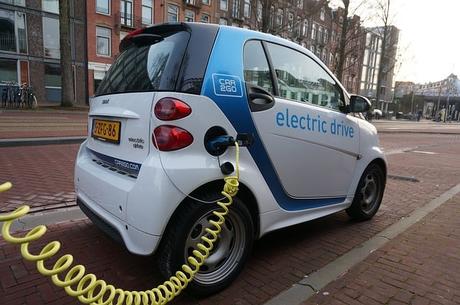The number of Electric Vehicles (EVs) projected by the National Grid by 2040 could be doubled due to the rapid rise in the use of EVs on UK roads – this was according to the recent National Grid Future Energy Scenarios, published on July 12, 2018. However, despite there is an increase in the demand for electricity, National Grid made it clear that the increase in the use of EVs will enable the UK to focus more on carbon electricity generation.
Moving forward, the National Grid stated that smart charging and vehicle-to-grid technology will help an efficient use of electricity daily. The National Grid also added that these vehicles will charge only when the demand for electricity is low and feed back to the grid when the demand is high.

“Growth in EVs support the continued trend towards more low-carbon generation. They will support the continued growth in renewables by storing excess generations and releasing it back to the network when it is needed,” The National Grid stated.
UK’s Future Energy Scenarios
In the UK, National Grid produces four sets of scenarios for its future energy supply and demand based on the company’s own modeling and consultation with the energy community. These scenarios help the company to plan for the ever-changing energy system.
Furthermore, the director and the UK system operator at National Grid, Fintan Slye, stated in a foreword:
“it’s possible to accurately forecast a single energy future over the long term. However, creating a range of credible futures allows us to continue supporting the development of an energy system that’s robust against different outcomes.”
It is important to know that there is a sturdier focus on this year low-carbon transition in the UK. “We’ve refreshed our scenario framework to reflect the increasing importance of decentralization and de-carbonization in our industry,” Slye wrote
There are four scenarios in the UK, and two of them meet the country’s greenhouse emission target for 2050. It is important to know that this target is projected to rise in response to the 2015 Paris agreement. In previous years, only one out of the four scenarios meet the UK’s 2050 target.
The Rapid Rise of EVs
The rapid rise of EVs is one of the big changes in this year’s scenarios. Comparing the chart with other scenarios that meet 2050 that were published in each year between 2013 and 2018, there is a significant change this year.
From the year 2013 to 2015, the National Grid stated that there will be about 5 million EVs in the UK by 2035. The company increased the number to 8 million in its 2016 work, further increasing to 10 million in 2040, based on a report by Carbon Brief at that time. The stance grew further in 2017 to 13 million in 2035 and 17 million in 2040.
Nevertheless, the National Grid has also stated that there may be 25 million EV’s by 2035 and 36 million by 2040, thus, doubling the 2017 stance when compared. The figures represent a tripling compared to 2016’s figures and a five-fold increase from the 2015 numbers. It is important also to know that the by 2040, the number of EVs will reach a saturation point with all possible vehicles electrified and new EV’s replacing old ones as they retire.
“We have been working hard to develop a much more holistic road transport model that takes into account the whole cost of ownership of vehicles. Our model is much more granular in its detail and consequently. it is more robust than the previous ones.” This was a June 2018 brief transport modeling statement.
The increase in the stance also reflects the government’s slightly weakened pledge to ban conventional petrol and diesel cars by 2040.
The Charging Routines of EVs
Furthermore, the June 2018 brief transport modeling also stated how the National Grid has been working on the charging habits of the EVs. The electrification of transport – and, potentially, also heat – will increase the demand for electricity in the UK. This also implies that more generating capacity will need to be built.
In 2017, National Grid worked on the impact of the increased in the demand for electricity was widely misreported as showing that the transition to EVs would unmanageable. Ever since, the company has been more realistic to explore the impact of EV’s.
“We anticipate that most consumers will avoid peak time charging although some may still choose to do so. Vehicle to Grid technology is also a new input into our model… In our scenarios, we show that this is going to have significant impacts on the energy landscape of the future.”
Even though there will be an increase in the demand of electricity, the transition to EVs will reduce the demand for energy, as they are more efficient than combustion-engine vehicles. An interactive tool developed by the Carbon Tracker Initiative shows how much EV adoption will cut into global oil demand.

